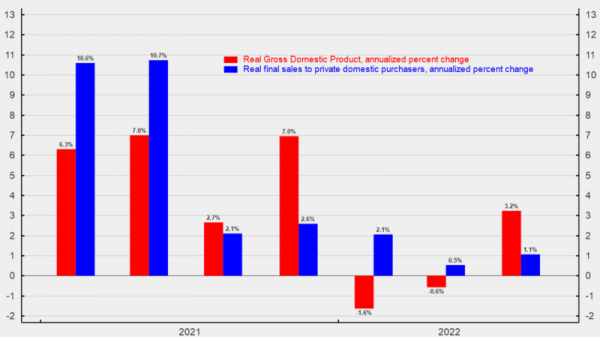
In Risky Business: Why Insurance Markets Fail and What to Do About It (Yale University Press, 2023), economists Liran Einav (Stanford), Amy Finkelstein (MIT), and Ray Fisman (Boston U.) attempt to render insurance interesting. A chatty style and interesting historical anecdotes may achieve that seemingly impossible goal for many readers.
The tradeoff, though, is that readers should not expect to learn much about insurers, insurance, or the insurance industry from the book. The authors botch several of their anecdotes, including their discussion of Willy Loman, the protagonist of Arthur Miller’s famous play Death of a Salesman. Loman need not have fretted that his insurer might not pay out if it somehow discovered his automobile mishap was a suicide, because all policies written after 1907 in New York(where the play was set, and which long dominated life insurance regulation nationally) were incontestable for any reason two years and a day after policy issuance. The real question is whether Loman’s insurer would have paid out on the double-indemnity accident rider that was common in the period when Loman would have become insured, the 1920s to 1940s. Without a suicide note, it almost certainly would have, if only to maintain its reputation in the marketplace.
Authors Einav, Finkelstein, and Fisman (EEF) make numerous other false or misleading claims, including that “in practice,” insureds do not “pay all their premiums up front and pay nothing thereafter” (p. 147). Insureds do pay upfront, though, when allowed by regulators, like when they purchase “paid up” life insurance.
The book’s key claim is, however, is more theoretical than empirical. Insurance, EFF drill home, is a prime example of a selection market, the type of market where the seller cares about who the buyer is. That’s because what the buyer gets out of the exchange only becomes known over time. A “good” buyer, from the perspective of the seller, gets little, but a “bad” one gets a lot. The book explains how sellers in selection markets try to sell only to “good” buyers but often fail in the attempt. Insurers, for example, want to insure safe drivers and people who live into their 90s or beyond, not speedsters on speed.
The notion of selection markets is an old one, but EFF trace it back only to George Akerlof’s famous 1970 “lemons” article on how adverse selection can destroy the market for used cars. As I showed in The Wealth of Nations Rediscovered (Cambridge University Press, 2002), however, Adam Smith explained adverse selection, moral hazard, and the principal-agent problem in the eighteenth century. Although EFF do not cite Smith, they almost quote him, noting that a bank’s “most eager borrowers” will be “gamblers and risk-takers.” Centuries ago, Smith noted that only “prodigals and projectors … would be willing to” pay a high rate of interest.
Adverse selection occurs before contracting or exchanging, and moral hazard occurs after. Lenders try to screen out “projectors” and other “eager borrowers” to reduce adverse selection. Once a loan is made, though, they also try to ensure that their borrowers have the incentive and ability to repay their loans. Combatting both adverse selection and moral hazard is crucial to the profitable provision of most financial services, including insurance.
The agency cost associated with the principal-agent problem is a type of moral hazard that reduces the efficiency of nonprofit organizations, governments, and, what Smith really focused upon, for-profit corporations. Agents (employees, contractors) often have incentives to self-deal through embezzlement or slacking, leading to institutional inefficiencies not often seen in proprietorships or partnerships. Agency issues are crucial to understanding insurance.
Yet Risky Business almost completely ignores moral hazard and agency costs. In a footnote, the authors promise more on moral hazard in a future book, but it was really needed in this one. They claim, for example, that people with bad credit must pay more for automobile insurance because bad credit is correlated with accident claims. That’s true, but more due to moral hazard than adverse selection: people with bad credit have a greater incentive to try to obtain an insurance payout and also less reason to try to avoid the negative impact on their credit score from a conviction of claim fraud.
Clemson economist Howard Bodenhorn once complained that I was like a boy with a hammer, for whom everything becomes a nail, because I applied the theory of asymmetric information to everything. But I was an information theory generalist compared to EFF, who hammer constantly on selection problems without considering the other major forms of asymmetric information. For example, they repeatedly claim that selection issues persist because insureds somehow know a lot more about their riskiness, even years into the future, than insurers can discern, even in this era of Big Data. What the authors measure though, is not the insured’s prescience, but instead, moral hazard. Insureds do not magically know that they will become “bad” customers, some insureds become “bad” over time due to changing circumstances that no one could foresee before the exchange. Many objectively “good” borrowers defaulted on mortgages in 2008-9, for example, because housing prices collapsed, the economy tanked, and lenders forgot the importance of minimizing moral hazard through conservative loan-to-value requirements.
EFF would be better able to understand and explain the importance of moral hazard and agency costs if they had seriously studied insurance history, instead of raiding it for anecdotes. They include, for example, an anecdote about marine insurance from the excellent work of Amherst University economist Christopher Kingston. If they had thoroughly engaged with Kingston’s work, however, they would better appreciate that insurers must contend with moral hazard and agency costs as well as adverse selection. Even the most experienced and sober ship captain could, under the right circumstances, find it advantageous to commit barratry (crash or sink the ship), which was why such behavior was a capital offense and also why captains were supposed to go down with their ships.
The authors are good economists and not ideological activists, which renders their blind spots regarding regulators all the more revealing. The story that they want readers to accept is that markets are generally good, but easily flummoxed by adverse selection, so the “guiding hand of government” is necessary, even if that guidance, as they document, often leads to worse results or redistributes wealth surreptitiously. They argue, for example, that preventing life insurers from setting rates based on race is a good regulation. As I explained in Financial Exclusion (AIER 2019), however, even Black-owned-and-operated life insurers charged Black insureds higher rates than on comparable white lives. But insurers also gave Blacks better rates on life annuities (contracts that pay out until death), suggesting that the life insurance premium differential was based on mortality tables, such as they were, and not outright discrimination.
The authors understand that regulations come with tradeoffs, but they underestimate those costs. According to researchers at the Mercatus Center, insurers are subject to “administrative browbeating.” That makes them adept at playing regulatory Whac-a-Mole, as EFF call it, but at the cost of real innovation. Insurers spend too much brainpower looking for loopholes and not enough thinking about how to reduce asymmetric information.
The authors’ devotion to government interference (or perhaps to the consulting fees they imagine garnering from their analyses of sundry plans and programs) blinds them to alternative arrangements. The authors rightly note that dental “insurance” is a misnomer for what are essentially prepayment plans, but selection is not the main culprit, as they claim. The main problem is that regulators treat dental insurance as a distinct category of insurance rather than as part of a broader array of coverage including health, disability, and life. Historically, major problems with separate fire, theft, wind, and water damage (not flood) policies were reduced or resolved once regulators allowed multi-line insurers to form and offer products like “all perils” property insurance.
Consider the advantages that could be gained by combining dental, disability, health, and life insurance in one policy, similar to “all perils” property insurance. If insurers were also vertically integrated with healthcare providers (HCPs), it would not be “too much expense and hassle” (as EFF claim) to monitor the health of policyholders, because the HCPs would have incentives to help their patients/insureds become as healthy as possible, as inexpensively as possible. Again, the historical record left unexplored by EFF provides ample evidence of the efficacy of such arrangements.
In actuarial terms, the death benefit would anchor the combined “all perils of life policy,” decreasing when the insurer makes major payments for dental work, disability, or healthcare. At the same time, the death benefit commits the insurer to a certain level of care, thus incentivizing insureds not to use the other insurance frivolously and to make as many premium payments as possible. Hard cases like Ed Stein would not have to choose “between medical care and bankruptcy” but rather between living a little longer and leaving nothing for their heirs, or dying a little sooner but leaving heirs with some cash. For those interested, I describe “all perils of life” policies in more detail in my 2010 book Fubarnomics, but the key point here is that regulations, not natural economic barriers, prevent experimentation with policies that could reduce selection, moral hazard, and agency costs to low levels.
To their credit, the authors worked out, without the benefit of the numerous historical precedents, that long-term insurance policies do a better job of reducing selection problems than short-term ones do. But they back away from the possibility of offering insurance contracts stretching from the womb to the grave although birth-to-death life insurance, initially funded by parents or grandparents of course, was once common. They seem to think that insurers would not be interested in such arrangements because changing circumstances might render them unprofitable. In fact, as historian George D. Smith and I explained in Mutually Beneficial (2004), mutual life insurers (and some joint-stock life insurers offering “participating” policies) worked out that problem over a century ago. They charge conservative (high) premiums but rebate them if the actual claims, investment, and administrative costs turn out better than originally forecast. This often happened at the Guardian and other big mutuals, because sales agents interested in keeping up their commissions pressured executives to do a good job. That’s literally an agency issue!
In sum, Risky Business will appeal to readers more interested in selection markets than in real-world insurance products, and to people with a high tolerance for ahistorical assumptions about the need for detailed insurance regulation and other government market interventions. The authors ask readers to “put yourself in” regulators’ “shoes and ask if you could really do better.” If I can’t do better, somebody surely can, but none of us will ever have a chance to try in a policy world dominated by narrow specialists like EFF.

























